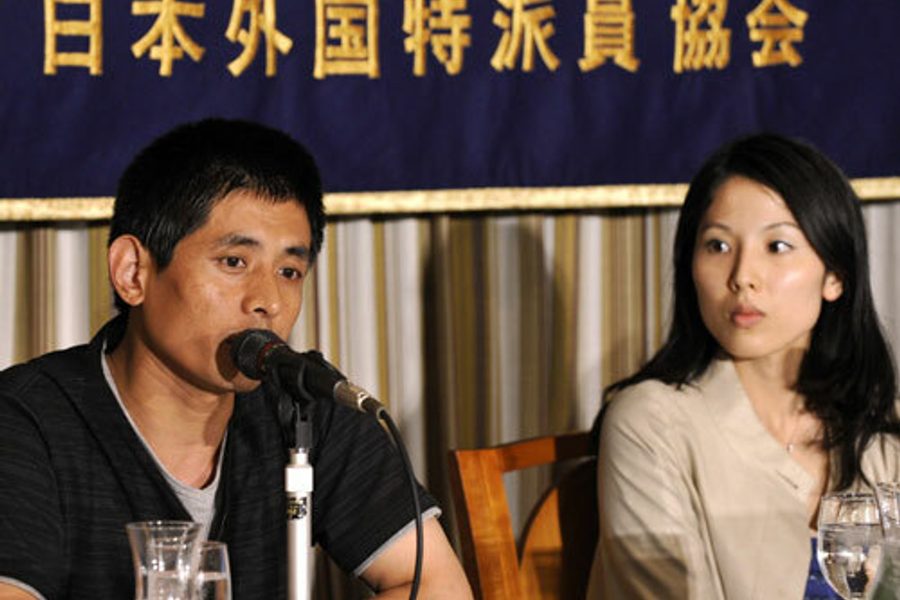
They’re not what usually comes to mind when we hear the term “Chinese exports,” but around the world, and especially in Asia, a major commodity that China sends overseas is its own citizens.
Parsing a classic, but often overlooked, example of transient labor migration, an investigation by the Hong Kong-based labor advocacy group “China Labour Bulletin” examines China’s biggest “market” for exported labor — its rich neighbor Japan.
Similar to “guest worker” programs in the United States, Japan uses a “trainee” system (another euphamism indicating temporariness) to bring in cheap manpower.
Since the 1980s, Japan’s manufacturers have found it increasingly difficult to recruit workers locally, particularly for low-paid, labour-intensive jobs in the so-called 3K; kitsui (demanding), kitanai (dirty), and kiken (dangerous) industries. At the same time, China’s economic reforms created a huge labour surplus in that country, which had to find employment somewhere.
The foreign trainee population has been estimated at about 200,000, and historically some two-thirds coming from China, according to CLB’s report (which follows a report on Chinese migrants in Singapore). The workforce may have dropped significantly since March, as migrants quickly left the country following the earthquake and tsunami.
Under the training scheme, workers are recruited through China-based employment agencies and arrange to work for certain employers as “trainees” for about three years. But once they get there, CLB found, many end up with a raw deal:
They are routinely exploited by both the Chinese company that places them overseas and the Japanese firm they end up working for. They have to pay excessive fees and commissions just to get the job and, once in Japan, are often forced to work long hours for low pay in frequently hazardous conditions. Their freedom of movement and association are severely constrained and the accommodation and food provided by their employer is often substandard.
It’s an old immigration story wrapped in the glossy shell of Japan’s hyper-modern economy. The devastation of the earthquake has created even more economic uncertainty on both sides of the labor chain. CLB Communications Director Geoffrey Crothall told In These Times:
Up to 100,000 trainees left Japan in the wake of the March 11 disaster and threat from Fukushima. As a result, many Japanese industries are now facing a severe labour shortage, particularly the sewing industry, which lost 30,000 of the 40,000 trainees employed in Japan.
The shock to the low-wage labor market may grow more acute in the coming months as the rebuilding effort ramps up, which may in turn exacerbate a deep lack of oversight and enforcement.
These migrants, often young and desperate for decent work, are funneled through a vast network of hundreds of placement agencies tied to sectors like “agriculture, fisheries, construction, food processing, textiles, and machinery and metal processing.” Many more “unlicensed” agencies peddle foreign labor underground. Under mounting pressure to stop the exploitation of Chinese migrants, the Japanese government has in recent reformed its regulation of employers and trainees. But as with most labor-import systems that treat workers as interchangeable drones, abuses still abound.
Despite Japan’s higher level of development, workers interviewed by CLB revealed that trainees are often warehoused under harsh conditions, without adequate language or skills training:
Most of the “skills training” period was, in fact, spent providing free labour to the placement company. Moreover, Ms Z and Ms Zh actually paid the company 200 yuan a month in living expenses at this time. Ms Z described how the sewing work they had to do at this time was of no value at all in terms of training:
“Actually, we had been working in factories doing sewing work for many years already. There was no need for us to practice at all, so it seemed like the company was just using us as unpaid labour.”
Whether the mistreatment is a matter of incompetence or malice, the system basically tracks workers into temporary jobs that offer little hope of permanent settlement and fall short on the promises of prosperity touted by recruiters. Moreover, the surveyed trainees had little recourse in the case of a dispute with their boss. Lacking support from the Chinese state labor union, CLB reports, “None of the trainees had access to legal advice or any other way of checking the legality of their contracts.”
While employer violations involve the typical cheating on wages and overtime, a 2007 government audit found that 115 of 449 employers flagged for misconduct had deceived workers about their placements. Some of the most harrowing cases involve the exploitation of vulnerable women:
Six female trainees from Hubei who were supposed to study the sewing of women’s and children’s clothing in Japan, were assigned by their Japanese employer to a laundry company washing overalls and gloves from electronics, pharmaceutical and chemical companies. All of them contracted either athlete’s foot, nail fungus or chemical skin burns after being exposed to toxins over a long period of time. Another female trainee, who went to Japan in 2004, ended up cleaning and shining shoes at the home of the company chairman.
The CLB report concludes, “Japan’s trainee system is, in effect, little more than a conveyor belt supplying cheap and temporary Chinese labor to Japan,” and that the recent wave of disaster may force a rethinking of this inherently unstable workforce program.
As Japan recovers, it will have to confront the question of the kind of society it wants to rebuild: one that fuels a high-tech economy with regressive labor policies, or one that upholds firm standards and rule of law for all, even its most excluded workers?
Michelle Chen is a contributing writer at In These Times and The Nation, a contributing editor at Dissent and a co-producer of the “Belabored” podcast. She studies history at the CUNY Graduate Center. She tweets at @meeshellchen.







